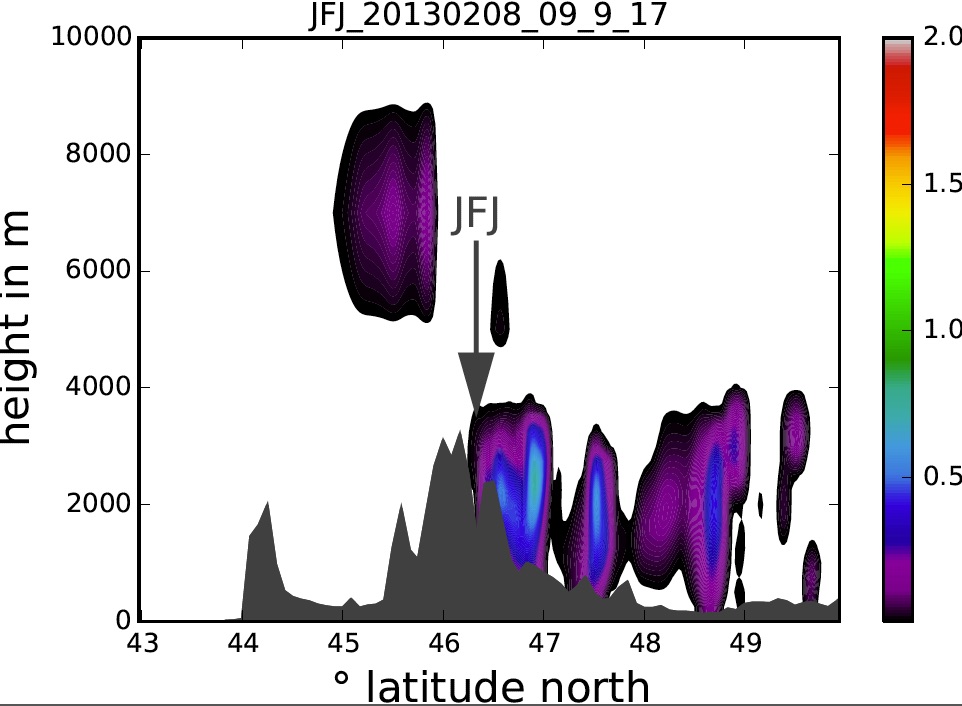Funding: DFG (Deutsche Forschungsgemeinschaft)
Ice crystal formation affects cloud radiative properties and may initiate or enhance precipitation. Mixed-phase clouds are composed of both super-cooled liquid droplets and ice crystals. Ice crystal formation within mixed-phase clouds requires the presence of an ice nucleating particle (INP) as a seed. A large variety of different aerosol particles can act as an INP and initiate the ice-phase in atmospheric clouds, but there are still open questions regarding the concentration, variability and micro-physical properties of atmospheric INPs.
In recent years parameterizations of ice nucleation have been developed and improved in order to calculate the abundance and variability of INP number concentration not only as a function of temperature and humidity, but also as a function of aerosol properties.
This study aims to investigate and test different state-of-the-art ice nucleation parameterizations, first in an idealized 2D setup for idealized orographic clouds. Second, the comprehensive model-system COSMO-ART is used to perform simulations for selected episodes during a field campaign at the High Alpine Research Station Jungfraujoch, Switzerland, during which mixed-phase clouds were observed. Extensive measurements of aerosol and ice particle properties were conducted during the field campaign. The measured total aerosol number size distribution and composition serve as an input to the physics scheme in COSMO-ART. The results of simulations with different ice nucleation parameterizations will be compared to measurements during the Ice Nuclei research UnIT (INUIT) joint field campaign in January/February 2013.

